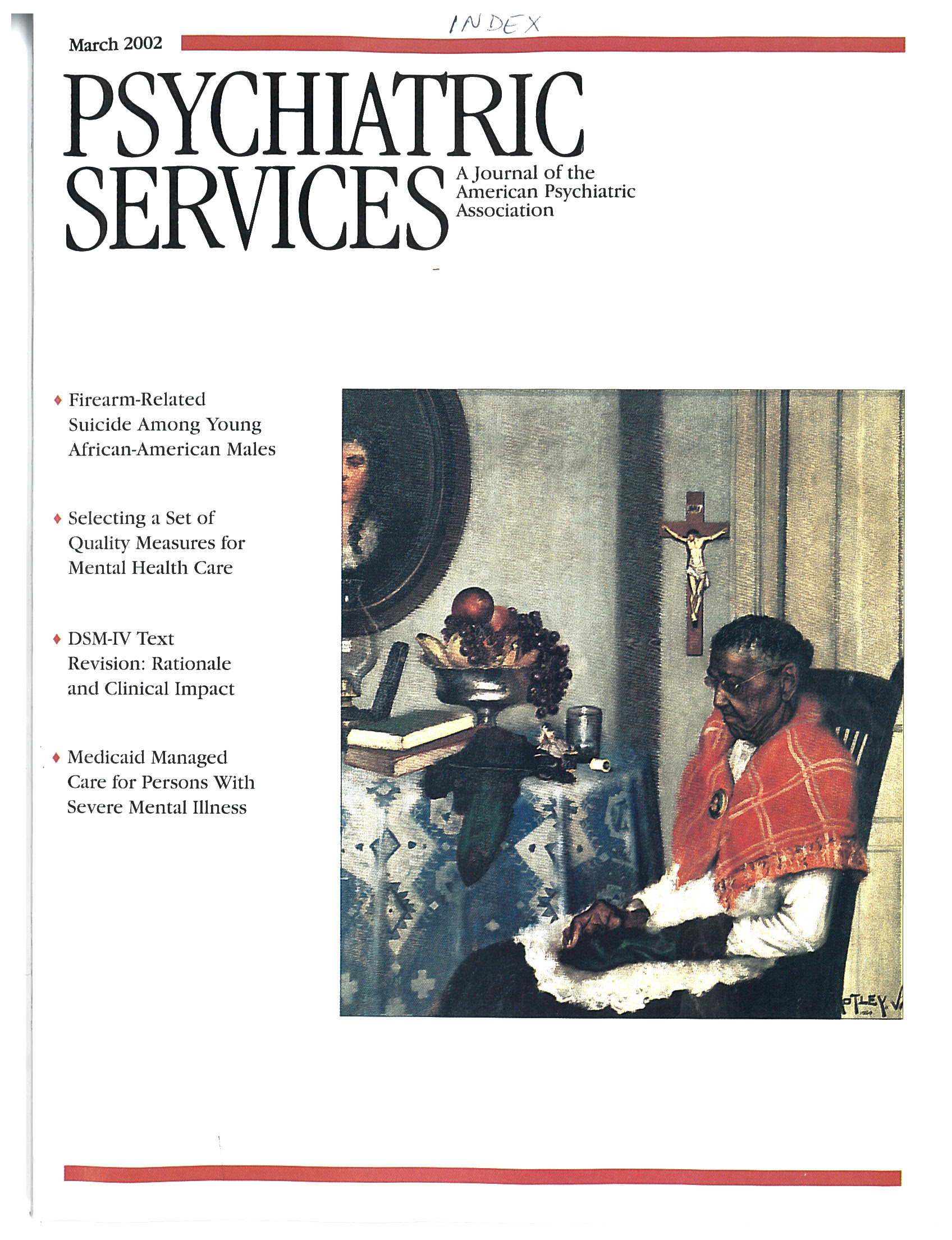To the Editor: Bipolar disorder is ranked as one of the leading causes of occupational disability among medical and psychiatric disorders (
1). However, current estimates suggest that individuals are not diagnosed as having bipolar disorder for an average of eight years after the emergence of symptoms (
2). Rates of bipolar disorder among patients at treatment centers are substantially lower than one would expect given the prevalence of the disorder in community samples (
3). Because lack of needed psychiatric treatment is among the most robust predictors of suicide (
4), the failure in treatment contexts to detect and treat this disorder is a serious concern.
Although there are a multitude of reasons why bipolar disorder may be underrepresented in treatment contexts, one explanation is that patients with the disorder are not being properly diagnosed. To evaluate this possibility, we conducted a survey. We mailed educational materials on bipolar disorder to 178 mental health providers in a managed behavioral health organization network. As part of the package, they received a printed postcard with questions about their routine screening practices. The responses were anonymous.
The practitioners were asked four questions: their type of license (M.D., Ph.D., or master's degree), the number of years they had been in practice, the number of patients with bipolar I and II disorder they had treated in the previous six months, and the proportion of their patients with major depression they had screened for lifetime mania. Forty practitioners returned the postcard, for a response rate of 23 percent.
The median number of patients with bipolar disorder treated in the previous six months was four, regardless of the practitioner's type of license. Psychiatrists treated significantly more patients with bipolar disorder. For psychiatrists the median was 20, and for both psychologists and master's-level clinicians, it was three (χ2=41.0, df=26, p=.03) The median percentage of patients with major depression who had been screened for lifetime mania was 69 percent, with a range of 0 to 100 percent. Twenty-nine clinicians (73 percent) reported screening for mania less than 100 percent of the time. Individuals with different types of professional licenses did not differ in the percentage of cases screened. The correlation between the number of years in practice and the percentage of cases screened was not significant.
The results suggest that the rate of screening for bipolar disorder was quite low, even among depressed patients with a high risk of this disorder. Moreover, the low rate of screening was found across disciplines and regardless of the number of years in practice. These findings suggest that a program to educate practitioners about the importance of screening would be a useful way to increase the quality of care for patients with bipolar disorder. Another useful step would be to provide tools to facilitate such screening, such as prompts on intake forms and other assessment instruments. Because patients with mania have little insight about its being a symptom of a disorder, high-quality care for these patients depends on whether treatment providers directly assess whether these symptoms are present.

